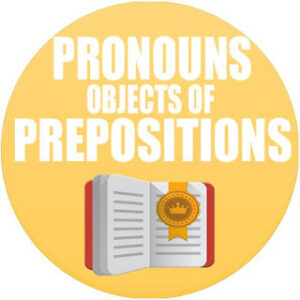Tag: Spanish Grammar 2
-

When to Use Reflexive Verbs in Spanish
When to Use Reflexive Verbs in Spanish? Let’s learn how and when to use reflexive verbs in the Spanish language. Using Me, Te, Se, Nos, Os in Spanish Note: A reflexive verb in Spanish is when the subject and the object are the same. I clean myself. subject: I verb: clean object: myself Since the…
-

Possessive Pronouns in Spanish
Possessive Pronouns in Spanish Translation Learn how to use possessive pronouns in Spanish. The possessive pronouns are similar to the possessive adjectives, but they are normally used with a definite article. – Singular Feminine – Plural Feminine mine– la mía– las mías yours (informal)– la tuya– las tuyas his/hers– la suya– las suyas yours (formal)– la suya– las suyas ours– la nuestra– las…
-

Demonstrative Adjectives in Spanish Translation
What is a demonstrative adjective in Spanish? Learn how to use demonstrative adjectives in Spanish translation. In this lesson, we will discuss demonstratives of two types: demonstrative adjectives and demonstrative pronouns. Adjective: describes a noun Pronoun: takes the place of a noun The same is true in Spanish. Ella escribe este libro.- She writes this book. (adjective)…
-

Irregular Comparatives in Spanish
How to use the irregular comparatives in Spanish? Learn how to use the irregular comparatives in Spanish. The following adjectives have irregular forms for the comparative and the superlative: Adjective: bueno (good) Comparative: mejor (better) Superlative: el/la mejor (the best) Adjective: malo (bad) Comparative: peor (worse) Superlative: el/la peor (the worst) Adjective: grande (big) Comparative: mayor (older; greater) Superlative: el/la mayor (the oldest; the…
-

Hacer Time Expressions in Spanish
How Do You Use Hacer Time Expressions in Spanish? Learn how to use hacer time expressions in Spanish. Note: The verb “hacer” can be used in a number of ways to indicate the length of time an action has been taking place. The first way uses the formula: Hace + time + que + Present tense form…
-

Me Gusta in Spanish
Me Gusta in Spanish Translation Learn how to use me gusta in Spanish. The verb “gustar” requires use of the indirect object pronouns. Note: The only forms of “gustar” you will use are “gusta” and “gustan” e.g. Me gusta la fresa. I like the strawberry Te gusta el programa. You like the program. Nos gusta el color azul. We…
-

Direct and Indirect Object in Spanish
How to Use the Spanish Direct and Indirect Object Pronouns Together? Learn how to use direct and indirect object in Spanish. Here are the direct object pronouns and the indirect object pronouns Direct Object Pronouns/ Indirect Object Pronouns/ English Equivalent me/ me/ me te/ te/ you (familiar) lo, la/ le/ him, her, it, you (formal) nos/ nos/ us os/ os/ you-all (informal) los, las/ les/ them, you-all (formal) Note:…
-

Spanish Indirect Object Pronouns
What are the Spanish Indirect Object Pronouns? Learn how to use the Spanish indirect object pronouns. The indirect object tells us where the direct object is going. Indirect object pronouns 1 The indirect object answers the question “to whom?” or “for whom” the action of the verb is performed. When a pronoun takes the place…
-

Direct Object Pronouns Spanish
What are the direct object pronouns in Spanish? Learn how to use the direct object pronouns in Spanish. The object that directly receives the action of the verb is called the direct object. The direct object can also be a person. Direct object pronouns in Spanish 1 The direct object answers the question “what?” or “whom?”…
-

Spanish Prepositional Pronouns
What are Spanish prepositional pronouns? Learn how to use Spanish Prepositional Pronouns. A pronoun is a word that is used instead of the name of a person or thing. When the pronoun acts as the object of a preposition, a different set of pronouns is used. Subject – Obj. Prep. Pronouns Yo (I) – mí Tú (You)(Informal) – ti Él/Ella(He/She)…
